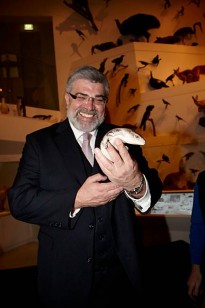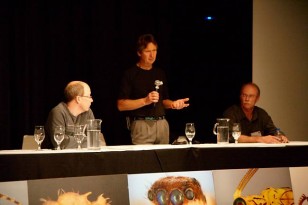Lynne Sealie, Communications Manager, Atlas of Living Australia

The Atlas of Living Australia (ALA) was launched by Senator the Hon Kim Carr, Minister for Innovation, Industry, Science and Research on 28 July at the Melbourne Museum. The occasion was an opportunity to preview some of the online tools and services the Atlas will deliver later this year to support biodiversity research.
CSIRO Chief Executive Megan Clark used the occasion to welcome three new partners to the Atlas project – the South Australian Museum, the Western Australian Museum, and Museums and Art Galleries of the Northern Territory.
Megan also announced a new partnership between the Atlas and Birds Australia to share data on Australia’s birdlife and CSIRO Publishing’s plans to allow the Atlas full access to 50 years of archival material from the Australian Journal of Zoology.
Dr Robin Hirst from Museum Victoria outlined the Atlas’ citizen science portal. When complete, the portal will enable members of the community to contribute data, sightings and images to the knowledge-bank on Australia’s biodiversity, making it available to researchers.
To facilitate this, the Atlas is developing a suite of online tools and resources, including mapping, imaging and identification tools, and a state-of-the-art application for mobile devices.

A symposium following the launch, offered guests demonstrations of the Atlas’ species searching and mapping capabilities as well as an introduction to the Pests and Diseases Image Library (PaDIL). Members of the audience were shown how the Atlas will enable biological information from different sources to be combined, explored and analysed, generating new possibilities for research and application. Lively discussion followed with many fruitful questions and suggestions.
The first public release of the Atlas is scheduled for October 2010.
Images of the Atlas launch taken by Jonathan Augier, Melbourne Museum, are available. Contact Lynne Sealie on (02) 6246 5901 for high resolution copies.